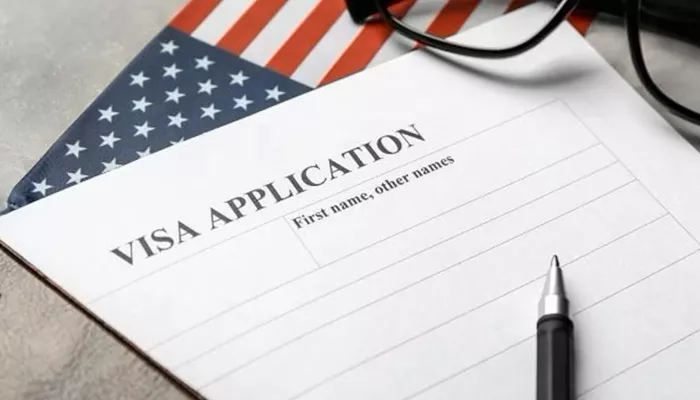If you’re considering applying for an H-2B visa to work in the United States, you might be too late. The United States Citizenship and Immigration Services (USCIS) has announced that the cap for the first half of fiscal year 2025 has already been reached.
In a recent statement, USCIS confirmed that the deadline for submitting petitions was September 18. This deadline applies to all new H-2B worker petitions for temporary non-agricultural positions starting before April 1, 2025. USCIS stated, “September 18 was the final receipt date for new cap-subject H-2B worker petitions requesting an employment start date before April 1, 2025.” They added, “We will reject new cap-subject H-2B petitions received after September 18 for employment start dates before April 1, 2025.”
Which Petitions Are Still Accepted?
Despite the cap being met, USCIS will still accept certain petitions that are exempt from the cap. These include:
H-2B workers already in the U.S. who are changing employers, extending their stay, or modifying their employment terms.
Fish roe processors, supervisors, and technicians.
Workers offering services in the Commonwealth of the Northern Mariana Islands and Guam from November 28, 2009, to December 31, 2029.
The H-2B visa program is designed to fill temporary labor shortages in non-agricultural sectors. These visas allow foreign workers to stay in the U.S. for a limited period to address gaps in industries facing labor shortages.
Additional Visas for FY 2024
In November 2023, USCIS announced an additional 64,716 H-2B visas for fiscal year 2024, on top of the existing cap of 66,000 visas. This increase aims to support sectors like hospitality, tourism, seafood processing, and landscaping. The move is part of broader efforts by the U.S. government to address labor shortages and expand legal migration pathways, as part of the Los Angeles Declaration for Migration and Protection.
The additional visas include:
20,000 visas allocated to workers from countries such as Colombia, Costa Rica, Ecuador, El Salvador, Haiti, and Honduras.
44,716 visas reserved for returning workers who previously held H-2B visas or had H-2B status in the last three fiscal years.
Eligibility for the H-2B Visa
The H-2B visa is intended for temporary non-agricultural work in sectors like construction, forestry, and landscaping. To qualify, employers must show:
No sufficient U.S. workers are available for the job.
Hiring H-2B workers will not negatively impact wages or conditions for U.S. workers.
The need for the worker’s services is temporary.
The employer will pay the worker at least the prevailing wage, federal or state minimum wage, or local minimum wage, whichever is higher.
The application process involves filing Form I-129, Petition for a Nonimmigrant Worker, which must be approved by both the U.S. Department of Labor and USCIS. After approval, applicants can file for a visa using an electronic DS-160 form or an interview waiver process.
H-2B Visa Ineligibility for Indian Nationals
Currently, Indian nationals are ineligible for the H-2B visa program. The U.S. Department of Homeland Security maintains a list of eligible countries, and India is not included. Eligible countries include Andorra, Australia, Barbados, Brazil, Canada, Colombia, Costa Rica, among others.
Reasons for Ineligibility
Countries may be excluded from the H-2B visa program due to factors such as:
Fraud or abuse within the visa system.
High rates of visa denials or overstays.
Concerns over human trafficking.
Non-compliance with visa terms.
According to USCIS, these issues can harm U.S. interests and lead to a country’s removal from the list of eligible nations.
How to Apply for an H-2B Visa
Here’s a step-by-step guide to applying for an H-2B visa:
Employer Files Form I-129: The U.S. employer must file Form I-129, Petition for a Nonimmigrant Worker, on behalf of the foreign worker with USCIS.
Labor Certification Approval: The U.S. Department of Labor must approve the labor certification, confirming no qualified U.S. workers are available and that hiring foreign workers won’t impact U.S. wages or working conditions.
USCIS Petition Approval: After review, USCIS will issue Form I-797B if the petition is approved, confirming the petition’s approval.
Visa Application: The foreign worker then submits an electronic DS-160 form for the visa application. Some workers may qualify for an interview waiver.
Receive Visa: Once processed and approved, the worker receives the H-2B visa, allowing temporary work in the U.S.
Related topics:
- Visa Backlog Concerns Grow for 2026 World Cup and 2028 Olympics
- Lawmakers Push for Immigration Reform Legislation in 2025 After Border Visit
- New 6-Country Tourist Visa and Electronic Travel Authorization Announced by Foreign Ministry


